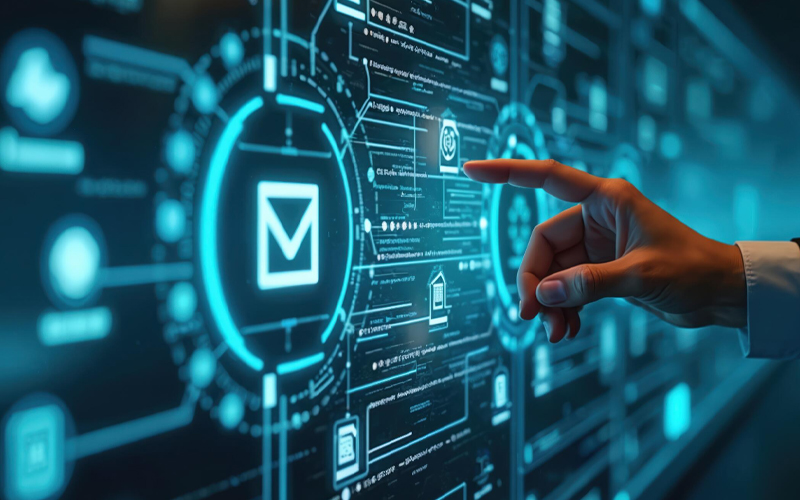As the world continues to go digital, and we conduct most of our lives and businesses online, the legal landscape and processes have evolved as well. One such key process and foundation of any litigation is eDiscovery, where concerned parties find and collect the Electronically Stored Information (ESI) relevant to the case. eDiscovery legal hold is one of the primary building blocks of an effective eDiscovery lifecycle that helps preserve relevant information and mitigates the risk of accidental deletion or loss of related documents.
What is legal hold, and why is it important?
An eDiscovery legal hold, or litigation hold, is the process of preserving relevant information when a litigation, audit, or investigation is imminent. This process involves identifying the relevant data custodians, notifying them of their preservation duties, monitoring their compliance, and documenting it for future legal review.
Legal professionals or law enforcement agencies initiate this process to ensure no one deletes, alters, or destroys critical ESI. Legal holds play a vital role in the eDiscovery lifecycle, preventing the loss or destruction of crucial evidence. Organisations can ensure compliance with discovery obligations and protect themselves from legal penalties by implementing an eDiscovery litigation hold.
Eight strategies to implement an effective eDiscovery litigation hold
Implementing an effective and defensible eDiscovery litigation hold requires a strategic approach to ensure the preservation of relevant information and compliance with any legal obligations. Here are eight best practices that can help you achieve that:
Start early and be proactive
One of the most important decisions is determining when to issue an eDiscovery legal hold. Starting early can help you mitigate the risk of data loss or accidental non-compliance. Proactively identifying potential triggers and acting swiftly to protect relevant ESI can help you avoid costly mistakes.
Identify key custodians
Choosing who to send the legal hold to is just as important to ensure its effectiveness. Carefully identifying custodians likely to possess relevant information – including employees, IT personnel, HR representatives, or even third-party vendors or contractors – ensures there are no gaps in the evidence that could weaken the defensibility of the legal hold.
Track and report on legal hold compliance
Creating a robust reporting structure for legal hold ensures accountability and transparency across the eDiscovery lifecycle. This includes a track of who received the hold, their acknowledgement, and compliance efforts.
Provide clear instructions
The contents of the eDiscovery litigation hold are just as important as its timing and data custodians. It must clearly outline what types of ESI to preserve, its location (email, shared drives, or cloud storage), and how to avoid modifying or deleting it. A well-drafted legal hold ensures custodians have a specific and actionable plan, reducing confusion and ensuring compliance.
Gather acknowledgements from custodians
Ensuring all recipients acknowledge their preservation obligations is a crucial part of a defensible eDiscovery legal hold process. Gathering acknowledgements verifies custodians understand their role in protecting ESI, with automated systems simplifying the acknowledgement tracking process and maintaining auditable compliance trails.
Maintain ongoing communication
Simply issuing a legal hold is often not enough. Sending regular reminders to custodians can help maintain awareness of their obligations over time. Frequent reminders help prevent accidental or intentional data manipulation or deletion, especially during lengthy litigations.
Define clear release procedures
A well-structured eDiscovery legal hold also outlines when to release the hold – either once the litigation concludes or the data is no longer needed. Communicating when custodians can return to normal data management practices helps avoid unnecessary data storage costs and privacy concerns.
Align with document retention and privacy policies
Lastly, be sure to align any legal hold process with relevant document retention and privacy regulations when it comes to concerns like data minimisation or protecting personally identifiable information. Organisations must balance ESI preservation needs with data privacy regulations for a defensible eDiscovery litigation hold.
These strategies can help organisations establish robust and defensible legal hold processes to enhance the eDiscovery lifecycle and ensure compliance. Legal process outsourcing services providers often play a pivotal role in helping companies navigate this process, minimise non-compliance risk, and improve litigation efficiency.
How can Infosys BPM help implement an effective eDiscovery legal hold?
Legal hold is an integral part of the eDiscovery lifecycle, and a defensible legal hold is critical to any litigation. Infosys BPM offers end-to-end managed review and eDiscovery services, helping organisations successfully navigate litigation support, regulatory inquiries, and investigations. With services encompassing eDiscovery consultation; information management; identification, preservation, and collections; document review and production; and more, our team of experienced legal and tech experts can help you create a streamlined and affordable eDiscovery process for an effective eDiscovery legal hold.








